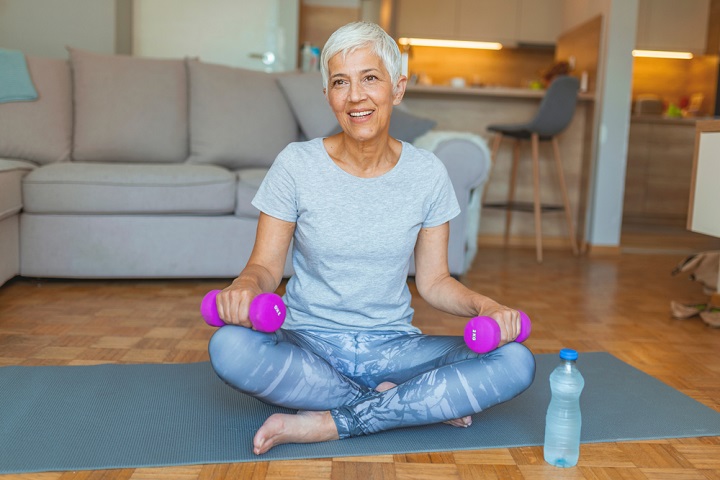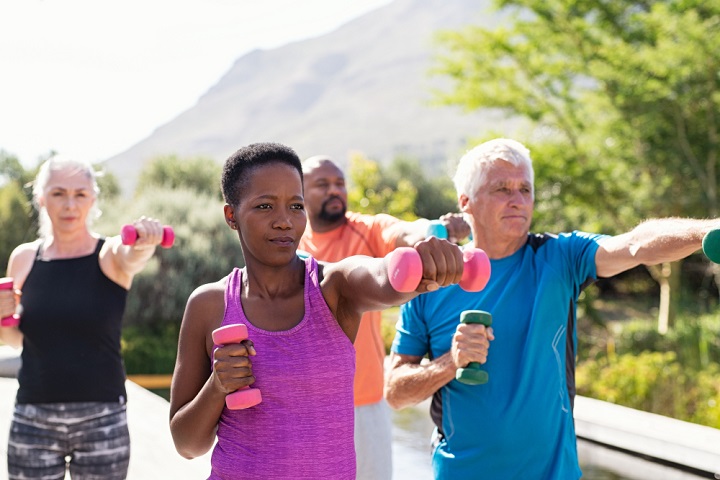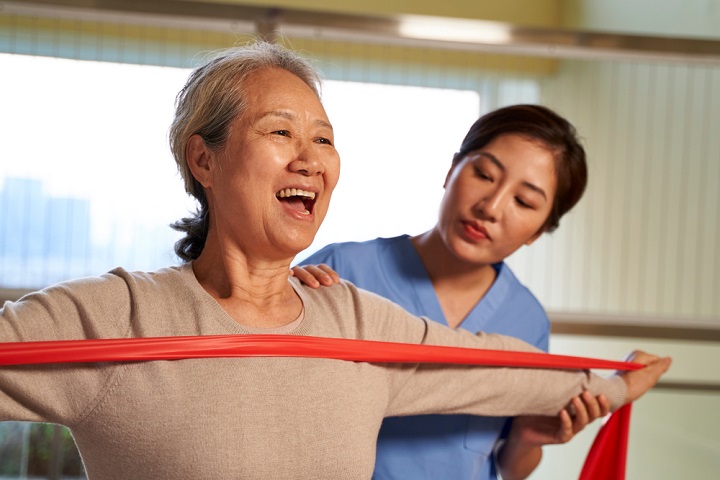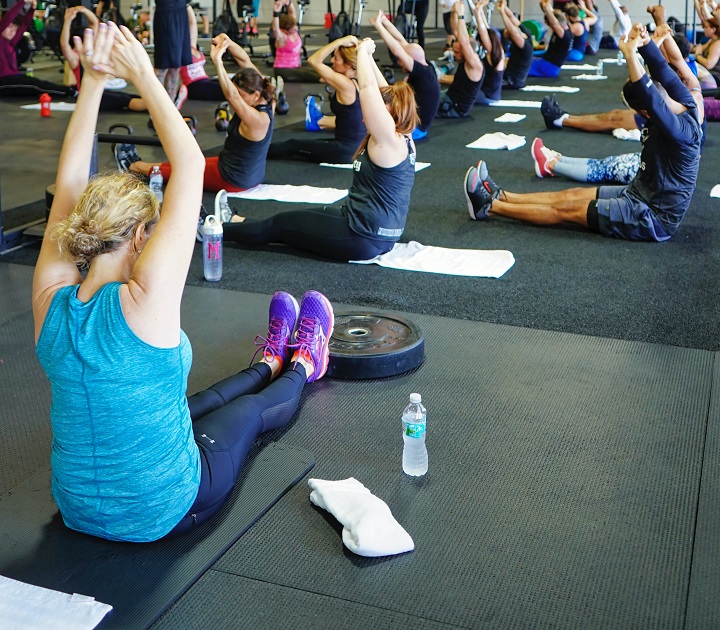Once women hit middle age, they often begin to lose bone and muscle mass, putting them at risk for osteoporosis and other health issues and contributing to health problems such as bladder leakage. Thankfully, a regular strength training routine can help counteract these age-related changes and help you stay healthy well into your golden years. Here are our top tips for strength training when you are 50 and over:
Table of Contents
1. Start with smaller weights.
Even the best bodybuilder didn’t walk into the gym and deadlift hundreds of pounds on their first try. When you start strength training, you need to begin with smaller weights and then work up to larger ones as your strength increases.
Everyone is different, but a good starting place for dumbbells is in the five- to 15-lb. range, depending on which muscle groups you are working on. Use smaller weights for your arms and larger weights for your legs. If you are doing weight machines at the gym, try it on the lightest setting first before taking it up a notch.

Source: Dragana Gordic/Shutterstock.com
2. Try bodyweight exercises.
If weights, even small ones, intimidate you, you can get started with strength training without any weights. Bodyweight exercises such as squats, lunges, pullups, and push-ups use your bodyweight to create resistance, making them a great choice for beginners.
You can also do them at home even if you don’t own weights, making it a great option for inclement days or people who don’t have a gym membership.
3. Consider resistance bands.
Another option for strength training is resistance bands. Resistance bands come in two styles — giant rubber bands that you can put around your legs or long tubes with handles on the ends that you can use for upper body exercises.
Resistance bands pull against your movements, making all your motions more difficult. Resistance bands are cheaper than dumbbells and take up less space, so they are popular among people who travel and don’t want to spend a lot of money on home gym equipment.
4. Add weights to cardio.
If you’re looking to shake up your cardio routine, you can add light dumbbells in the two- to five-lb. Range to get some weight training benefits and increase the intensity. It would help if you aimed to do two to three days of dedicated strength training each week, with the other workouts devoted to cardio. Just cause sure not to overdo it, and drop the weights if you get too tired.

Source: Rido/Shutterstock.com
5. Alternate upper body and lower body.
Most people like to focus on one section of their body in each strength training workout, focusing on either the upper or lower body while giving the other part-time to recover. If you see it too difficult to do multiple exercises for your upper body or lower body at once, you can alternate between the two for a total body workout.
Just make sure that you’re working all the major muscle groups — chest, back, arms, hamstrings, quadriceps, calves, etc. — in a given workout or week so that nothing gets left behind.
6. Don’t forget your core and pelvis.
The upper and lower bodies focus on strength training, but it’s really important not to ignore your core and pelvis, especially those over 50. These muscles form the foundation of all our physical movements, so having a strong core is important for preventing injury.
Unfortunately, many women find their pelvic muscles weakened as they age, and this will be exacerbated by pelvic trauma such as giving birth. Doing pelvic floor exercises or Kegel ball exercises will help strengthen these pelvic muscles and fend off age-related decline.
7. Always warm up and cool down.
Warming up before every workout, including strength training, is key for preventing injury while working out. Take five to 10 minutes before every workout to do light cardio and stretch out sore muscles. You should also take the same amount of time to cool down after each workout, stretching out the muscles you have worked on and doing recovery work such as foam rolling.
8. Stay hydrated.
Proper hydration is essential during any workout. Being dehydrated or getting overheated can contribute to hot flashes, so watch yourself closely for signs of an incoming hot flash and take a break to cool down and hydrate if you feel one coming on. Make sure to drink plenty of water before your workout, and continue to take small sips as you exercise to prevent your stomach from feeling sloshy.

Source: imtmphoto/Shutterstock.com
9. Fuel your body.
Your body needs the right nutrients to rebuild itself after a tough workout, and you should be getting most (if not all) of these nutrients through your diet. Eating a balanced diet will also help fend off the middle-age weight gain that often comes after 50.
Focus on eating lean proteins, whole grains, fruits, vegetables, and healthy fats. Limit your consumption of foods high in sugar, salt, unhealthy fats, and highly processed and prepackaged foods.
10. Get some expert advice.
If you are brand new to power training, consider booking a few personal training sessions either in person or virtually. The trainer can show you how to use the machines and your home gym equipment and demonstrate proper form for you. They can also help you figure out what size weights you should use and devise a training plan to help you slowly and safely increase your weights over time.
Strength training is essential for staving off age-related bone and muscle loss and staying healthy as you get older. Follow these tips to start strength training after 50 and become healthier.

